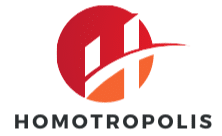In an increasingly digital era, the way people work is being transformed. For creative agencies in the UK, fostering a dynamic workspace environment is crucial to stay competitive in the ever-evolving marketing and advertising landscape. The space where employees operate plays a significant role in defining the quality of their work, the time efficiency, and their overall productivity. Understanding how to design a workspace that encourages creativity, boosts morale, and enhances productivity is crucial for any business, particularly creative agencies.
The Significance of a Dynamic Workspace in Creative Agencies
A dynamic workspace environment is more than just a physical area. It’s the heart of an agency where ideas are born, developed, and executed. The office space should inspire employees, stimulate creativity, and foster collaboration. It’s based not only on the office’s physical layout but also its culture, work processes, and the digital tools at your disposal.
A découvrir également : What Are the Effective Ways to Manage Seasonal Fluctuations in the UK Hospitality Industry?
Creativity flourishes in an environment that values diversity, open communication, and flexibility. Employees should feel comfortable exchanging ideas, taking risks, and pushing boundaries. This type of workspace encourages people to think outside the box, a vital skill in the creative industry.
Furthermore, a dynamic workspace should integrate digital solutions that facilitate efficient work processes. In the age of remote working, digital tools like video conferencing, collaborative software, and project management tools play an essential role in ensuring seamless communication and workflow.
A découvrir également : How to Safeguard Intellectual Property for UK Startups in the Creative Sector?
Designing a Dynamic Workspace for Creative Agencies
The design of your office can significantly influence your employees’ productivity, creativity and well-being. A well-designed workspace should foster collaboration, inspire creativity, and promote well-being. Here are some points to consider when creating a dynamic work environment:
Natural Light and Open Spaces
An abundance of natural light can boost mood and energy levels, leading to greater productivity. Open spaces encourage team interaction, which is key in a collaborative industry like advertising or marketing.
Flexible Workspaces
The office layout should be flexible to accommodate different work styles and tasks. This can include quiet areas for focused work, open areas for collaboration, and comfortable spaces for relaxation and informal discussions.
Incorporate Nature
Bringing the outdoors in, with plants or natural elements, can reduce stress and increase creativity and productivity.
Aesthetically Pleasing Environment
A creative agency should stimulate creativity. An aesthetically pleasing office with art, color, and interesting design elements can inspire employees and reflect the agency’s creative identity.
Cultivating a Dynamic Workspace Culture
A dynamic workspace culture is a critical aspect of a thriving work environment. It goes beyond physical space and delves more into the values, norms, and practices that define how work gets done in your agency.
Prioritize clear and open communication. This will help ensure that everyone understands the agency’s goals and their role in achieving them. Regular feedback and recognition encourage employees and foster a sense of belonging and motivation.
Promote a culture of learning and development. This can be through skills training, mentorship programs, or providing opportunities for employees to attend industry events and conferences.
Furthermore, create an environment of trust and support. Encourage team members to take risks and innovate, and ensure they know failure is part of the learning process.
Integrating Digital Solutions in the Workspace
Digital tools are essential in creating a dynamic workspace. They not only support remote working but also enhance communication, collaboration, and productivity within the office.
Project management tools such as Trello or Asana can help keep track of tasks, deadlines, and progress. Communication tools like Slack or Microsoft Teams facilitate seamless discussions, whether for casual chats or formal meetings.
Collaborative software, such as Google Docs or Dropbox, makes it easy to share, edit, and review work in real time. Virtual whiteboards like Miro or Mural can be an excellent tool for brainstorming sessions, particularly for remote teams.
Implementing Employee Well-being Practices
A dynamic workspace also cares for the well-being of its employees. When employees are healthy, both physically and mentally, they are more likely to be productive and engaged in their work.
Consider incorporating wellness initiatives like fitness programs, mental health resources, or relaxation spaces in your office. Foster work-life balance by promoting flexible working hours and ensuring employees take regular breaks during the day.
Remember, a dynamic workspace is not a one-size-fits-all solution. It’s about creating an environment that suits your agency’s specific needs and culture. Ultimately, it should foster creativity, encourage collaboration, and boost productivity- the hallmarks of a successful creative agency.
Utilising Web Design and Digital Marketing Capabilities
To create a dynamic workspace environment, it’s important to leverage the power of web design and digital marketing capabilities. These capabilities can significantly enhance your agency’s reach and communication, both internally and with clients.
Web design is not just about creating visually appealing websites. It’s also about designing intuitive and user-friendly platforms that cater to your clients’ specific needs. For creative agencies, this could include building a robust intranet system that allows real-time sharing of ideas, feedback, and progress reports. It could also involve setting up an online resource hub where employees can access necessary tools and materials, such as industry-related articles, design templates, or social media analytics, to boost their skills and productivity.
Similarly, digital marketing methods can also contribute to creating a dynamic workspace. For instance, using social media platforms for internal communication can foster a sense of community and open plan discussion, even if employees are working remotely. Using SEO strategies and online analytics can also help your agency track its performance in real-time, encouraging transparency and accountability.
Moreover, digital marketing can also aid in disseminating the agency’s culture and values to a wider audience. Whether it’s through an engaging blog post about a day in the life of an account manager or a fun video showcasing your unique office design, creative agencies can use digital marketing methods to attract like-minded talents and clients.
Creating a Life Balance within Your Agency
Maintaining a proper work-life balance is crucial in any work environment, especially in creative agencies. The nature of creative work often involves tight deadlines and high pressure, which can lead to stress and burnout if not managed effectively.
Promoting flexible working conditions can significantly contribute to a healthier work-life balance. This can include options for remote work, flexible hours, or a results-based work arrangement. While maintaining productivity and meeting client expectations are essential, it’s also important to recognise that employees have personal commitments outside of work. Flexible working conditions can provide employees with the autonomy to manage their time effectively, enhancing their overall work satisfaction and commitment to the agency.
Wellness programs also play a vital role in promoting work-life balance. This can include mental health resources, fitness challenges, or regular team-building activities. Ensuring that employees have the necessary support and resources to manage their physical and mental health can significantly contribute to their well-being and productivity.
Conclusion
Creating a dynamic workspace environment is integral to the success of UK creative agencies. It’s about designing an office space that sparks creativity and collaboration, cultivating a work culture that values diversity and learning, and integrating digital solutions that enhance efficiency and communication. At the same time, it’s about ensuring employees’ well-being and life balance, recognising that a healthy and happy team is a productive one.
While there may not be a one-size-fits-all approach, understanding the unique needs and culture of your agency is vital in creating a workspace that works best for your team. As the landscape of work continues to evolve, creative agencies must continue to adapt and innovate, redefining what a dynamic workspace environment looks like in the United Kingdom and beyond.













